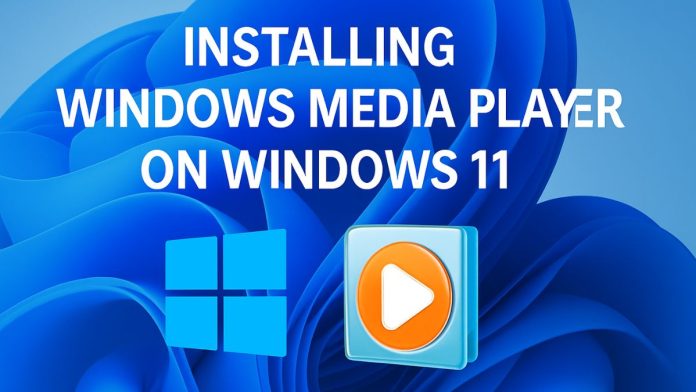Windows Media Player has been one of the most iconic multimedia applications developed by Microsoft. Over the years, it has been a go-to option for playing music, videos, and managing personal media libraries. With the release of Windows 11, Microsoft introduced a redesigned version of Media Player with a modern look and improved performance.
However, some users may find that Windows Media Player is not installed by default or may have trouble accessing it. This comprehensive guide will walk you through everything you need to know about installing Windows Media Player on Windows 11, including how to enable the classic version or get the new modern version, system requirements, possible issues, and how to resolve them.
Why Do You Need a Windows Media Player?
Before diving into the installation process, it is important to understand why so many users still prefer Windows Media Player. Despite the rise of third-party media players like VLC and KMPlayer, Windows Media Player continues to attract users for its simplicity, deep Windows integration, and ability to sync with media libraries.
It supports a wide variety of formats including MP3, WMV, WMA, and more. The classic version is lightweight, fast, and easy to navigate, while the new modern version offers a sleek user interface and supports newer formats with better hardware acceleration. Whether you’re looking to play your favorite music, watch videos, or manage playlists, Windows Media Player provides a hassle-free experience with minimal system resource usage.
Versions of Windows Media Player Available in Windows 11
Windows 11 offers two versions of Windows Media Player, depending on the version of the operating system you are running. The first is the classic Windows Media Player 12, which has been around since Windows 7. The second is the new Media Player app, which is available from the Microsoft Store and offers a redesigned interface and better integration with Windows 11’s aesthetics. Some users prefer the older version due to familiarity, while others enjoy the features and design of the new app. Depending on your needs, you can choose to install either version—or both.
Checking If Windows Media Player Is Already Installed
Before trying to install Windows Media Player, you should first check whether it is already available on your system. Here’s how you can do that:
- Click the Start button and type Windows Media Player into the search bar.
- If you see Windows Media Player in the results, it is already installed.
- You can right-click it and select Pin to Start or Pin to Taskbar for easier access.
Alternatively, you can press Windows + R to open the Run dialog box, then type wmplayer and press Enter. If the player opens, you’re good to go. If you receive an error saying the application cannot be found, you may need to install or enable it.
How to Install Classic Windows Media Player in Windows 11
In some editions of Windows 11, such as Windows 11 Home or Windows 11 Pro, Windows Media Player is available but might be disabled as an optional feature. Here’s how you can enable or install it:
Step-by-Step Guide to Enable Classic Windows Media Player
- Open Settings
Click on the Start button and select Settings or press Windows + I to open the Settings app. - Go to Optional Features
In the Settings menu, navigate to Apps > Optional features. - Add a Feature
Scroll down and click on the View features button next to Add an optional feature. - Search for Windows Media Player
In the search bar, type Windows Media Player. When it appears in the list, select it and click Next. - Install the Feature
Click Install and wait for Windows to install the media player. This may take a few minutes depending on your system speed. - Launch Windows Media Player
Once the installation is complete, go back to the Start Menu and search for Windows Media Player. You can now use it like before.
This method works for both personal and enterprise editions of Windows 11, and it’s the best way to get the traditional Windows Media Player 12 experience on your system.
How to Install the New Media Player App on Windows 11
Microsoft has also introduced a brand-new Media Player app that is designed with Windows 11 in mind. It replaces Groove Music and comes with a clean, modern interface that better aligns with Windows 11’s Fluent Design language. This version is more suited for users who prefer a visually appealing experience along with playlist management and high-resolution audio and video playback.
Installing the Modern Media Player App via Microsoft Store
- Open Microsoft Store
Click on the Start button and search for Microsoft Store, then open it. - Search for Media Player
In the Microsoft Store search bar, type Media Player and hit Enter. Look for the app published by Microsoft Corporation. - Download and Install
Click on the app, then press the Get or Install button to download and install it. - Launch the New Media Player
Once installed, open the app from the Start Menu. It will automatically sync with your music and video folders.
This version of Media Player replaces Groove Music by default and offers improved support for playlists, album art, and even dark mode support.
System Requirements for Windows Media Player on Windows 11
Both the classic and modern versions of Windows Media Player have minimal system requirements, which is why they are widely compatible with most Windows 11 machines. Here’s what you need:
- Operating System: Windows 11 (any edition)
- Processor: 1 GHz or faster with 2 or more cores
- RAM: 4 GB minimum (8 GB recommended for modern Media Player)
- Storage: At least 500 MB of available space
- Internet Connection: Required for downloading from Microsoft Store
If your system meets the basic Windows 11 requirements, you should have no problem installing and running either version of the media player.
Common Issues and Troubleshooting
Even though installing Windows Media Player is generally straightforward, users may occasionally run into problems. Here are some common issues and how to fix them:
Media Player Not Showing Up After Installation
If Windows Media Player doesn’t appear in your Start Menu after installation, restart your PC. If it still doesn’t show, go back to the Optional Features settings to verify if the installation was successful. Try removing and reinstalling the feature again.
Error Code 0x80070490
This error may appear while installing optional features. It is usually related to corrupted system files. Run the System File Checker (sfc /scannow) in Command Prompt to fix it.
Microsoft Store Doesn’t Load Media Player App
If you’re having trouble finding or downloading the Media Player app in the Microsoft Store, make sure your Windows 11 is up to date. The new Media Player app is only available on recent versions of Windows 11 (build 22000 and above). Go to Settings > Windows Update and click Check for updates.
Differences Between Classic and Modern Media Player
Understanding the key differences between the two versions can help you decide which one to install:
| Feature | Classic Media Player 12 | New Media Player App |
|---|---|---|
| Interface | Legacy UI (Windows 7 style) | Modern Fluent Design |
| Format Support | Basic formats like MP3, WMV, etc. | Broader format and codec support |
| Playlist Management | Yes | Yes (improved visuals) |
| Dark Mode | No | Yes |
| Integration | Better for older media libraries | Better integration with Windows 11 |
| Updates | Part of Windows Updates | Updated via Microsoft Store |
You can install both versions side-by-side if needed, especially if you prefer using the older interface for certain tasks and the new one for casual music or video playback.
Alternatives to Windows Media Player
While Windows Media Player is highly capable, some users may look for additional features or better codec support. Here are a few popular alternatives:
- VLC Media Player: Open-source, supports almost every file format, subtitles, and network streaming.
- KMPlayer: Advanced features like 3D playback, high-definition video support, and subtitle customization.
- PotPlayer: Lightweight and highly customizable, great for users looking for deep control over playback.
- Foobar2000: A powerful music player with a minimal interface, excellent for audiophiles.
Final Thoughts
Installing Windows Media Player on Windows 11 is a straightforward process whether you prefer the classic version or the new modern app. The key is to understand your needs—if you want simplicity and familiarity, go with the classic version available via optional features.
If you prefer modern UI, dark mode, and better playlist visuals, install the Media Player app from the Microsoft Store. Both offer excellent media playback experiences that are tightly integrated with the Windows ecosystem. With the help of this guide, you can easily set up and enjoy your favorite music and videos with Microsoft’s trusted media solution.

![How to Sync Microsoft Edge Across Devices [Phone/Laptop/PC] Sync Microsoft Edge Across Devices](https://www.internetoutsider.com/wp-content/uploads/2025/05/Sync-Microsoft-Edge-Across-Devices-218x150.jpg)
![How to Play Bing Homepage Quiz? [2025 Updated] how-to-play-bing-homepage-quiz](https://www.internetoutsider.com/wp-content/uploads/2025/05/how-to-play-bing-homepage-quiz-218x150.jpg)

![How to Use WhatsApp Web? [Beginners Friendly] how-to-use-whatsapp-web-thumb](https://www.internetoutsider.com/wp-content/uploads/2025/05/how-to-use-whatsapp-web-thumb-218x150.jpg)

